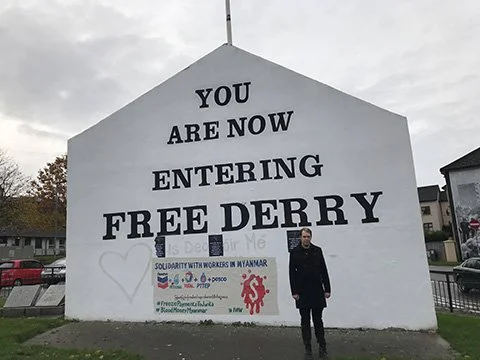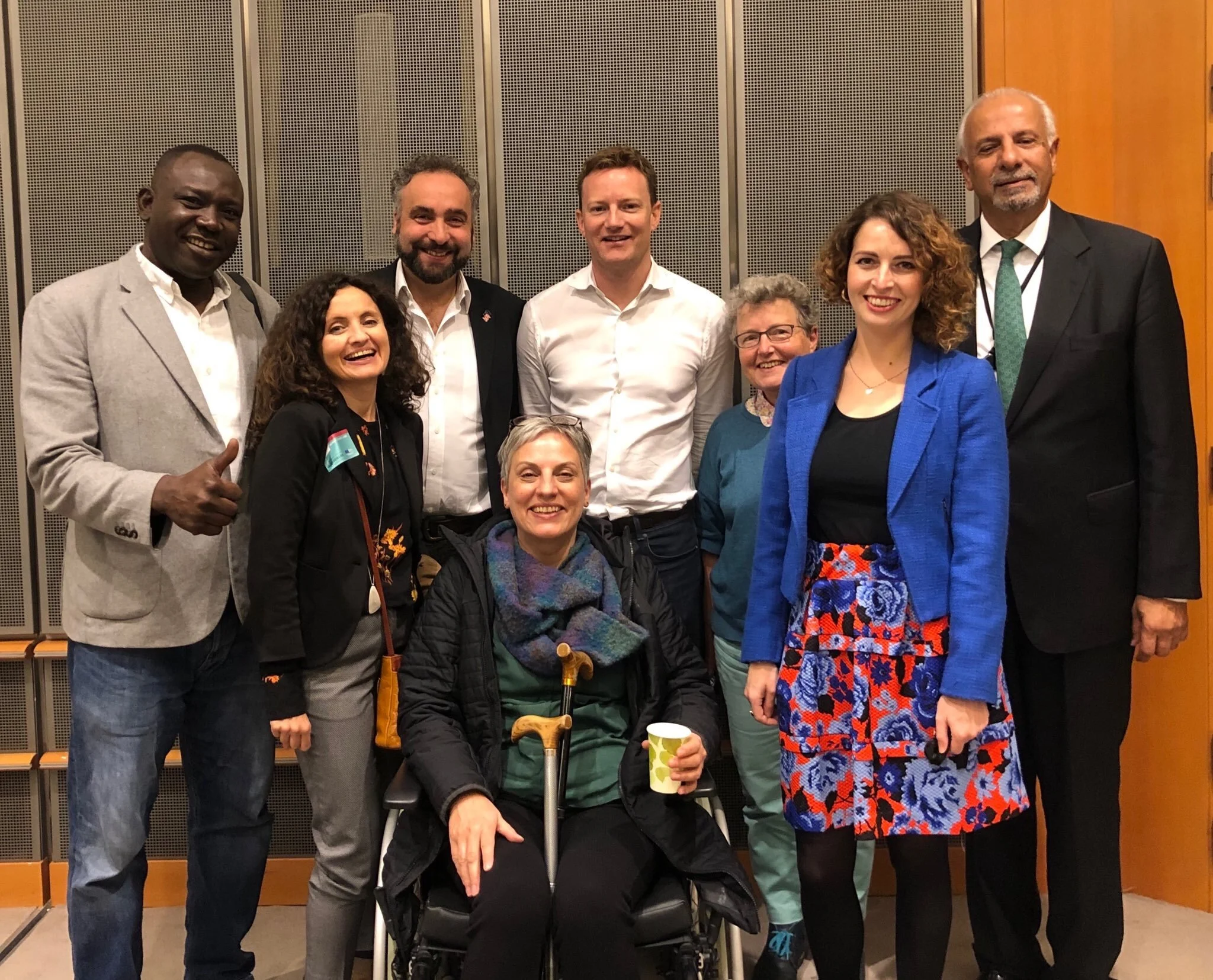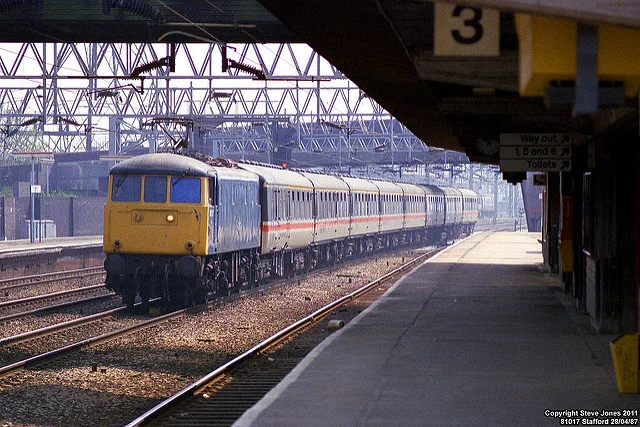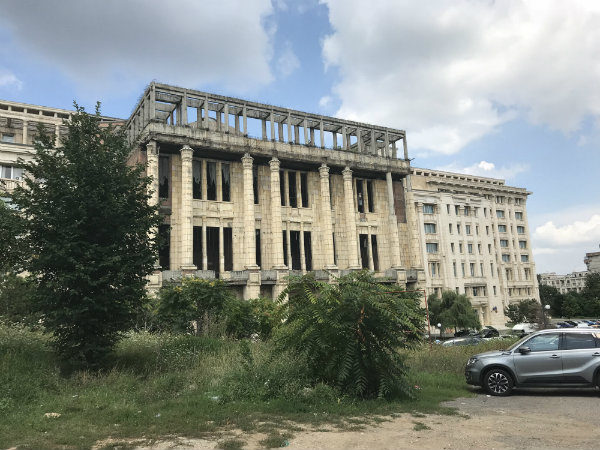We are still in the Renaissance: How the art, culture and politics of Florence helps us understand how this city has shaped the West and what could come next
Europe, its ideals, its history, its culture and its politics is contained within Florence. There is a lot you can learn from visiting the city and learning about its past and present.
Florence is a European city with a population just shy of 400,000 in the centre of Italy. It’s a very popular travel destination and is known worldwide for its art, history, food, wine, architecture and leather. The word Florence is a placeholder for the city’s history and culture. Hearing or reading the name brings all this complexity to mind, but how do we unpack exactly what we think about when we think about Florence?
The best place to start is with what Florence is best known for: its Renaissance art history. Through these works of art, we can see how the city presented itself in the past and the present.
Art and Florence’s museums
There are some staggeringly famous paintings in the collections of the Uffizi Gallery in Florence. This includes works by Sandro Botticelli, such as The Birth of Venus and Spring. Botticelli had a very distinctive style. As well as embodying the emerging style of the Renaissance, his work draws on Mediaeval tapestries and the art of the ancient world.
His paintings convey a delicate beauty, seen most clearly in The Birth of Venus. Although this is a painting of a scene from Roman mythology, the fragile beauty with which Botticelli painted these figures was not a feature of ancient art. It was something introduced to Western art by Mediaeval paintings of the Madonna.
There are many other incredibly beautiful pieces of art that fill the halls of Florence’s museums, which have been made in the city over the years. This includes Venus of Urbino by Titian, a painting so sumptuous that you could almost step into the room it depicts, and Michelangelo’s sculpture of David, the perfect incarnation of Florentine confidence during the Renaissance. The key thing about all these famous works of art is that they show the beauty of the physical world, not the perfection of the spiritual world.
The architecture of Florence
The other aspect of Florence that both shows the beauty of the physical world and is a key element of the Renaissance is the city’s architecture. There are so many beautiful buildings in Florence, it’s hard to know where to start when looking at the city’s architecture. I would recommend beginning with one of the smaller buildings, although it’s no less interesting than the famous landmarks.
The Pazzi Chapel is a small chapel in the Basilica di Santa Croce designed by the iconic Renaissance architect Filippo Brunelleschi. Here is where Renaissance architecture began, as the chapel marks a break with the previously dominant gothic style of religious architecture. The art historian and broadcaster Kenneth Clark (not to be confused with the Tory politician, he spells Clarke with an “e”) described the Pazzi chapel as possessing the architecture of humanism, a building made in proportion to humans. This humanist approach is essential to understanding the art of Florence and the Renaissance.
Of course, the most famous and most striking building in Florence is the Duomo, Florence’s Cathedral; also designed by Brunelleschi, later in his career than the Pazzi chapel. This huge cathedral possessed at one point the tallest dome in the world and is both an artistic and engineering marvel. Its distinctive tall dome is a technical innovation that distinguishes it from the flatter domes of the ancient world, found on the Pantheon for example. The interior is decorated with beautiful frescoes, mainly on the inside of the huge dome.
New architecture drawing on the ancient world
Brunelleschi was the founding father of Renaissance architecture, and the Duomo is his masterpiece. Brunelleschi incorporated elements of Ancient Greek and Roman architecture into his designs. He used porticos, arches and domes, which are Roman, but added Greek columns making Renaissance architecture a fusion of both Ancient Greece and Rome.
This was a new style of architecture for a new Renaissance culture, incorporating elements of the past but to create something new. There was a harmony between the interior and exterior aspects of Brunelleschi's buildings. This was a break with gothic architecture where buildings were made on an inhuman scale, which made people feel small and insignificant next to the power of the divine. By contrast the Pazzi chapel is almost cosy. It’s reassuringly human and its human proportions reflect the dignity that humans are entitled to, which was emphasised in Renaissance philosophy.
Much of Renaissance architecture was inspired by Vitruvius's book on architecture, the only treatise on architecture to survive from the ancient world, where he emphasises that architecture should be based on the proportion of the human body. His views inspired many Renaissance buildings, as well as another iconic symbol of the Renaissance: Leonardo Da Vinci’s Vitruvian Man.
Humanism as the Renaissance knew it
Vitruvian Man is a drawing, but it unites both Renaissance art and architecture in that it contains the two key philosophical elements of Renaissance thinking: humanism and anthropocentrism.
Humanism, in this sense, is the idea that all human beings have dignity and the right to self-determination and happiness. Also, that there should be a striving for human excellence. It is a belief that the world was created for humans and the existence of humans adds beauty to the world; beauty not found in God’s creation. This isn’t humanism in the Richard Dawkins sense, a denial of God’s existence or his moral authority, but humanism as an emphasis on human exceptionalism.
The concept is best embodied by the Humanist hive in Ada Palmer’s Terra Ignota novels. The hive is a collection of individuals committed to human achievement in all fields, from the arts to science to sport, and the fact that the Humanists’ entire society is geared towards advancing human excellence in all fields is a perfect encapsulation of Renaissance humanism. Palmer herself is a historian of the Renaissance, when she is not writing science fiction novels.
What is anthropocentrism?
Anthropocentrism, the other crucial Renaissance value seen in the art of the period, is the idea that humans, and not God, are the philosophical centre of the universe. God is still the creator of the universe, but humans can change it to something that suits them. This is again reflected in Renaissance art’s focus on humans.
These two philosophical concepts are best summed up by Ancient Greek philosopher Protagoras saying that “man is the measure of all things,” which Kenneth Clarke used as the title for his film on the early Renaissance in his landmark art history TV series Civilisation.
These philosophical concepts are the foundation of our modern world. We still put humans at the centre of our culture and politics, despite attempts to suggest that putting the planet at the centre might be more sustainable in the long term. We believe that humans can remake the world and that humans bring beauty to the world.
We are still in the Renaissance
The humanist drive for excellence can be seen today in our attraction to great works of art, or in the hero worship of artists, sports people or scientists. Similarly, humanism’s emphasis on the dignity of people can be seen in our modern concepts of civil rights and social justice.
We are still in the Renaissance, on some level. It was a philosophical shift we have not escaped. Even modernism’s attempts to tear down all that came before to build something better, ultimately led to the concept being layered on top of Renaissance philosophy, rather than replacing it. Our thinking is still governed by humanism and anthropocentrism, which is the legacy that Florence has given to the world.
New writing and new ways of thinking
The stunning culture produced over the centuries in Florence also includes writing. Dante Alighieri lived here and wrote his Divine Comedy in the city. In doing so, he not only changed the Christian understanding of hell, purgatory and heaven, but also created his own world through the power of his writing.
Francesco Petrarch, an iconic thinker and writer of the Renaissance, was also from Florence. Petrarch is regarded as the first humanist and his work spans both the Middle Ages and the Renaissance. He was also the first person to read and understand ancient literature and led a revival of the Latin language. As Clarke said in Civilisation, Petrarch championed the idea of a “revival under the influence of classical [antique] culture.”
Renaissance philosophy began with Petrarch and Dante. They came up with new ways of thinking that reached back into the Ancient World, but also responded to the times they lived in. They created the literary and philosophical values of the Renaissance. Philosophy became related to humans rather than God.
Science and philosophy in a religious age
This was still a very religious time, but the achievements of people were seen as the greatest praise of humanity’s creator. Ancient Greek philosopher Protagoras’s pronouncement that “man is the measure of all things” became the phrase that summed up the time, just as Da Vinci’s Vitruvian Man was the image.
What we might describe as modern science began through the Renaissance’s philosophical investigations. During the Renaissance philosophers wanted to understand how the world worked. They became less interested in questions like "how many angels are there" and more interested in questions about the world around us.
There was also an increase in interest in ethics, as this was the dawn of the era of humanism. Renaissance values dominated writing and thinking. Even Dante’s writing is less focused on the Mediaeval glorification of God, and more focused on how human life can be better lived (within the context of a divine judgement).
Florence as a modern city
These key people, from Brunelleschi to Dante to Botticelli, helped create the modern world. They are all connected to Florence and all from the early Renaissance, a time where art, writing and thinking reconnected with the Ancient World. Florence was the centre of this movement, and it has left its mark on the city and the world.
Is Florence best summarised by its Renaissance history and the contribution it has made to our thinking? Florence is a modern city with modern amenities, not just old buildings and art. During a recent trip, I visited the area around the University of Florence’s School of Architecture. This is a Shoreditch-like area of the city complete with craft beer bars and casual dining restaurants.
The middle-class culture of places such as this is found all over the world, from Bed–Stuy to Budapest. It was once described as hipster, but it’s now mainstream. It both transcends and embraces local culture. I ate at Nugolo, whose sparse almost industrial interiors and menu featuring unusual modern takes on classic Italian dishes was reminiscent of places I have eaten in London, Berlin and San Francisco. You could pick up this part of Florence and drop it in East London and everyone would carry on as they were.
Hipster culture in Florence
Is this to say that this area of Florence is the same as everywhere else? At least in terms of contemporary culture? Partly, yes. The internet and globalisation have spread a standardised Western middle-class culture - let’s call it Hipster for want of a better word - all over the world and Florence is no exception.
Like most cultures, Hipster culture is not a monolith and in Florence, like everywhere else, it’s adapted to the local environment. It has grown into the city’s culture and not flattened it. Tuscan wines and the region's notoriously good meat are adapted to the modern Hipster tastes.
All this is to say that Florence is not just history, art and things that happened a long time ago. There is a vibrant modern culture to the city, which is more representative of how people live now and is thus a better way to understand Florence.
From culture to politics
Culture is merely one competing means to investigate the nature of Florence as a place. There are many others: sport, language and, of course, politics. I will focus on politics as I know next to nothing about sport.
Shortly after my visit to Florence, Italy had a general election where the far-right politician Giorgia Meloni became Prime Minister. Italian politics has been through a period of severe instability. The turmoil has been so extreme it makes British politics look positively dull. The country overall has become significantly poorer since the 2008 financial crash and people are increasingly angry about it.
All sorts of coalitions have been tried, from an alliance of the populist right with the populists centre (that was the League and Five Star government), to a government led by the self-styled Tony Blair of Italy Matteo Renzi, to one led by former President of the European Central Bank Mario Draghi and now this far-right government.
Italian politics is a microcosm of the problems of 21st century Europe. Low wage, low growth, low productivity, an ageing population (Italy has the highest median age in Europe and the second highest in the world, behind Japan), rising populism, extremes of all kinds and a lack of consensus as to how to tackle the problems. Italy has tried everything, but nothing makes a difference.
What can Machiavelli teach us?
When investigating politics, a famous Florentine provides some useful insights. Perhaps the most famous, or infamous, writer on politics was from Florence, Niccolo Machiavelli.
Machiavelli’s writing is foundational for many peoples’ thinking about politics. Rory Stewart quotes extensively from Machiavelli in his book, Occupational Hazards, about being a coalition governor in post invasion Iraq. Machiavelli has a lot to teach us about politics, but it’s worth remembering his writing comes from a world before our modern understanding of the state or our modern politics. The Florence where Machiavelli lived and was buried - I saw his tomb whilst I was there - is almost beyond our understanding today.
Machiavelli is often quoted and often misunderstood. His central point is that politicians should be effective, not nice, and defend the state from external and internal threats. People with a cynical view of politics often use Machiavelli as a justification for strongman rule or brute force. This is an oversimplification. Machiavelli did endorse the use of violence, but he thought a good leader shouldn’t use violence too much, or he will get a reputation for excessive cruelty.
An age of violence
Machiavelli thought a leader should be tough, but not too tough. He wrote that being a good politician is not the same as being a good person. Modern democratic politicians and voters can learn from this. Expecting our leaders to be perfect is too high a standard for them to live up to.
Above all, when looking at Machiavelli and what he can teach us, it should be remembered that he came from a very different time. The level of violence that Machiavelli was comfortable with would be considered extremely brutal by all except the most cruel and bloodthirsty of today’s rulers.
He lived in an age, despite the noble humanist views of the Renaissance, where the sort of violence that would make even the most gore loving horror movie fan vomit, was commonplace. Fear and brutal efficiency were a means to wield power in such a world, but the lessons from such a time should always be viewed in this context.
The dignity of humanism
The far-right is now in control of Italy. It’s worth remembering that the Renaissance, which made Italy prosperous and famous, emphasised humanism and the dignity of all people. How much dignity will the far-right give the people they don’t like? They could stand to learn something from the values that made Italy a leading philosophical and cultural light in the past.
Another way to understand Florence is through my own experience. The knowledge of firsthand experience can be more complex than what we learn at a distance from reading or other research.
Accessibility of art in modern bourgeois society
Renaissance Florence was the beginnings of a recognisably modern city. It was bourgeois and was filled with shops, which is what you find in Florence today. What we experience in our everyday lives in modern towns and cities, a bourgeois and commercial culture, brings us closer to what Florence in the Renaissance was like for the few who lived through the dawn of this new age.
By visiting Florence today, what you can experience of the Renaissance is much greater than what most people living in Renaissance Florence could experience at the time. Our museums make art and culture much more accessible to a wider range of people today than at any point in our past. The Renaissance was limited to wealthy merchants and courtiers, it was not something experienced by the everyday Florentines, but you CAN experience the beautiful art it left behind (for an admission fee).
The glories of the past and the challenges of the present
A place with a history as long and complicated as Florence is difficult to unpack even with a series of tools, including art history and politics, at our disposal. The complexity of such a place defies easy explanation, however, if I were to condense all I have learned down to a hot take, then it is that we should not be so distracted by the glory of the past that we overlook the challenges of the present.
Our liberal humanist civilisation, which was shaped in many ways by the art and politics of Renaissance Florence, is not as permanent as the marble and stone of Brunelleschi’s buildings. It can be broken down and replaced with the type of naked brutality that was the backdrop of Machiavelli’s life.
The election of people like Meloni is a step down the road that leads to destroying the humanism that Florence is famous for, a humanism that gave the world great art as well as the concept of universal human dignity. We tear all this down at our peril.
Defending it or tearing it all down
Let the past of Florence serve as an example of what can be done and let the present serve as an example of how this can all be lost and replaced with something much darker. Italy’s problems aren’t unique to that country; an ageing population, low wages, ineffective governments that don’t solve people’s problems exist all over Europe and the world. We need radical change to address these issues.
At the end of this journey, I’m left thinking of a famous German and not an Italian. Rosa Luxemburg said society faces a choice between socialism or barbarism and this is nowhere more apparent than in Italy. If socialists defend the humanism and dignity of the Renaissance and the far-right is against it, then they are the forces of violent barbarism; the leaders that Machiavelli warned us against.
Civilisation in all its glory existed in Florence, but Italy warns us that if we’re not careful it can all be torn down and replaced with barbarism.

















